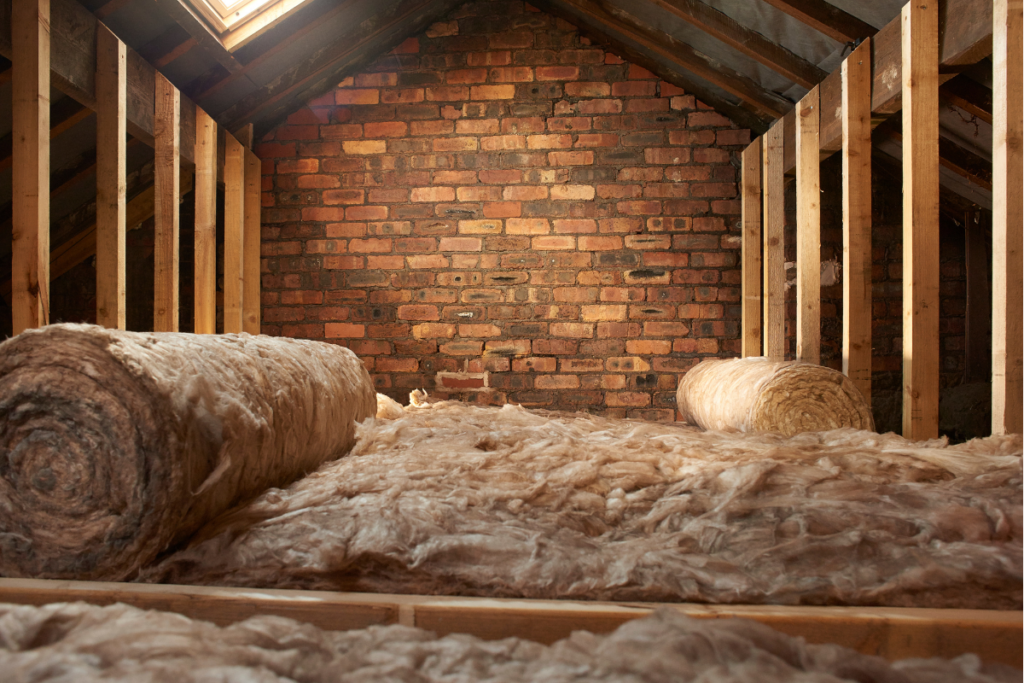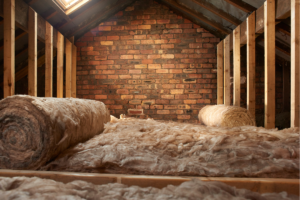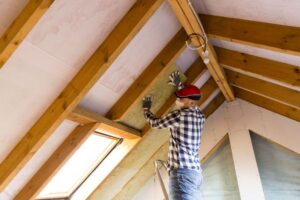A Beginner’s Guide to Eco-Friendly Insulation Solutions

Insulating your home is one of the most effective ways to save energy, reduce bills, and minimise your environmental footprint. But with so many options on the market, choosing an eco-friendly insulation solution can feel overwhelming. This guide will walk you through sustainable options, their benefits, and how to choose one that meets your needs without compromising on performance or cost.
Why Eco-Friendly Insulation Matters
The construction industry accounts for a significant portion of global carbon emissions. Choosing sustainable materials, like eco-friendly insulation, can help reduce this environmental impact. Traditional insulation materials, such as fibreglass and foam, are energy-intensive to produce and often difficult to recycle. Eco-friendly alternatives, however, are designed with sustainability in mind, offering lower emissions during production and cleaner disposal options.
Beyond environmental benefits, eco-friendly insulation often provides better air quality and moisture resistance in your home, making it a win-win for you and the planet.
Key Factors to Consider When Choosing Sustainable Insulation
Before jumping into specific materials, it’s important to understand what to look for in eco-friendly insulation:
1. Sustainability Certifications
Certifications like BREEAM, Passivhaus, or the GreenGuard Gold label indicate that a material meets eco-friendly standards. These certifications evaluate factors such as production practices, energy-saving capabilities, and environmental impact.
2. Natural or Recycled Materials
Look for materials made from renewable sources (such as sheep’s wool or cellulose) or those that utilise recycled content, like denim or glass wool. These options often require less energy to produce and are biodegradable or recyclable at the end of their life.
3. Affordability
Eco-friendly insulation doesn’t have to break the bank. While some sustainable options come with a higher upfront cost, they often offer savings on energy bills over the long term. Plus, many governments and organisations offer grants or incentives for using environmentally friendly building materials.
4. Thermal Performance
When choosing insulation, ensure it effectively retains heat. While avoiding the term “R-value” (a predominantly American measure), prioritise options known for reducing heat loss and improving energy efficiency.
5. Longevity and Maintenance
Consider materials with a long lifespan and minimal maintenance requirements. Durable insulation reduces the need for replacement and further reduces waste.
Popular Eco-Friendly Insulation Options
Here are some common sustainable insulation materials and their unique benefits:
1. Sheep’s Wool
– What is it? This natural material has been used for centuries as a thermal insulator. It’s renewable, biodegradable, and highly effective at regulating temperature and humidity.
– Benefits:
– Naturally fire-resistant
– Excellent moisture-wicking properties
– Low energy production
– Best For: Homes in areas with high humidity or variable climates.
2. Cellulose Insulation
– What is it? Made from recycled paper products like newspapers, cellulose is treated with non-toxic chemicals to improve fire and pest resistance.
– Benefits:
– High recycled content (up to 85%)
– Cost-effective and widely available
– Best For: Retrofitting walls and ceilings in older houses.
3. Denim Insulation
– What is it? Often referred to as “cotton insulation”, this material is made from recycled denim jeans and other cotton fabrics.
– Benefits:
– Soft and easy to handle (no skin irritation like traditional fibreglass)
– Safe for indoor air quality
– Made from 100% recycled materials
– Best For: Walls, attics, and small spaces.
4. Cork Insulation
– What is it? Sourced from the bark of cork trees, this material is entirely renewable and biodegradable. Cork has a unique cellular structure that makes it a fantastic insulator.
– Benefits:
– Naturally mould- and mildew-resistant
– Long-lasting and durable
– Sustainable harvesting process
– Best For: Floors and walls in both warm and cold climates.
5. EcoTherm Insulation
– What is it? One of the leading names in sustainable building solutions, EcoTherm provides advanced products made with low-impact manufacturing processes.
– Benefits:
– Specially designed for energy efficiency
– Lightweight and easy to install
– Available in multiple formats for various applications
– Best For: Builders needing a versatile, all-in-one insulation solution.
6. Hemp Insulation
– What is it? Made from the fibres of hemp plants, this insulation is a renewable and rapidly growing alternative to traditional options.
– Benefits:
– Carbon-negative material (absorbs CO2 as it grows)
– Rot- and pest-resistant without added chemicals
– Biodegradable
– Best For: Eco-conscious home-builders looking to maximise sustainability.
Tips for Eco-Conscious Contractors
Making the switch to eco-friendly insulation doesn’t just benefit the environment; it’s also a smart business move. Here’s how contractors can streamline the process:
- Educate Clients: Many clients want sustainable homes but may not know where to start. Offering eco-friendly options builds your value as a contractor.
- Choose Local Suppliers: Sourcing materials locally reduces carbon emissions from transportation and supports businesses in your community.
- Opt for Intelligent Design: Work with architects and designers to integrate sustainable materials into the building process from the beginning.
- Take Advantage of Incentives: Look into government grants or sustainability schemes that make eco-friendly retrofitting more affordable for clients.
Breaking Common Myths About Eco-Friendly Insulation
- “It’s Too Expensive”: While initial costs may be higher, the energy savings over time often outweigh the upfront expenditure.
- “It Doesn’t Work as Well as Traditional Insulation”: Modern eco-friendly materials are very effective and have similar thermal properties to their synthetic counterparts.
- “It’s Hard to Find”: More builders’ merchants and suppliers are stocking eco-friendly options due to increasing demand.
Small Changes for a Big Environmental Impact
Ian from Insulation Warehouse Direct says “Switching to eco-friendly insulation is an essential step towards creating sustainable, energy-efficient buildings.” Not only does it reduce greenhouse gas emissions, but it also creates healthier, more durable living spaces.
If you’re ready to upgrade your insulation or start your next sustainable project, consider exploring products like EcoTherm and other innovative solutions. Together, builders and eco-conscious buyers can make a significant environmental impact while enjoying the comforts of a well-insulated home.







